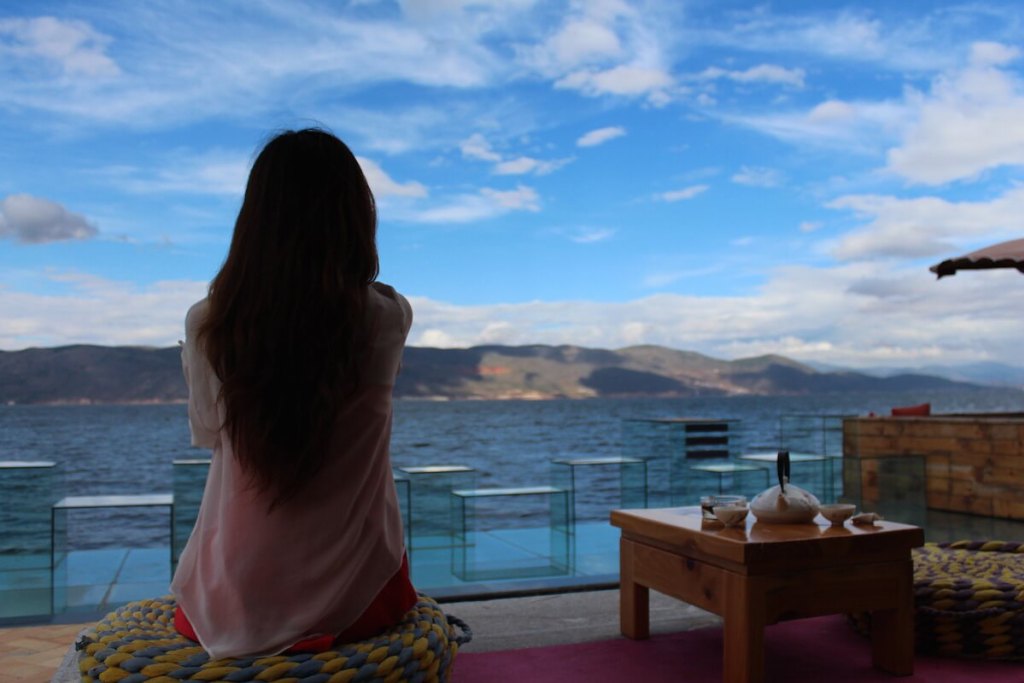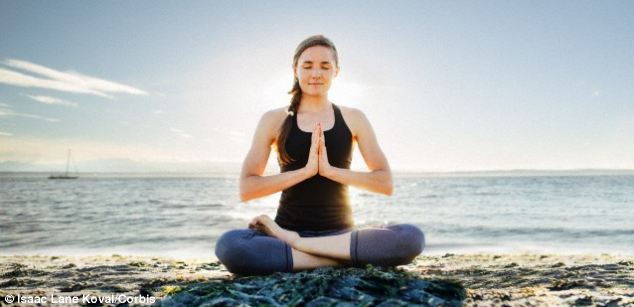It’s important to find a time out.
To attain enlightenment or even a certain level of meditative bliss, it isn’t necessary to practice in a cave. In fact, it’s more effective if we can bring meditative techniques into everyday situations. By doing so, not only will we be able to handle everyday problems more skillfully, we will also lead deeper, more meaningful and happier lives. We got Dharmacharya Shantum Seth, an ordained Zen teacher in the tradition of Thich Nhat Hanh, to reveal how we can be mindful in everyday situations.
- How can we be mindful while eating?
Often we are eating while speaking, watching television or going through our phones. In these situations, we are not eating our food, but eating our words, the TV programme or whatever we are seeing on our phones. We fail to realise that food is a gift from the Universe that comprises the soil, rain, effort of the farmer, the sunshine and so much more. When we eat mindfully, becoming aware of all these elements, we understand our interconnectivity with everything else. While mindful eating doesn’t require complete silence, it is helpful to have a silent period of maybe 10 minutes at the start of the meal. It is also good to start with a contemplation on the food we are about to eat. When we feel and chew each and every morsel in the mouth, the food tastes much better. Eating mindfully also develops a sense of gratitude and the awareness that there are so many people who go hungry. As we eat in this way, we can realise the path of understanding and love. It’s one of the better kept secrets in weight-watching, because when you eat with full concentration on the food, we eat with moderation and it is not possible to overeat. - How can walks be meditative?
Every activity can be transformed from the mundane to the magical with mindfulness. Begin by realising that we are fortunate to have two healthy legs to walk. If we are in a hurry and agitated, we imprint that energy on to the Earth. In fact, we can transform that anxiety and stress into peace by imprinting mindfulness in every step. Just being present in the walk is a de-stressing exercise. Mindful walks are also helpful for people who don’t like to sit still and meditate. You can be awakened and enlightened because you’re stilling your mind by being in the moment, enjoying each step, the nature around you and the breeze. However, we can do this anywhere; at home, in the office, on the street. As you walk imagine that a lotus blooms under each foot. You can also use some words with each step, like ‘here, here, here’; ‘now, now, now’. Or a phrase such as ‘On this beautiful Earth, I step in peace’. - How can we bring mindfulness to work?
Work is something that many of us spend half our lives at, sometimes even more. It is useful to see whether the work you are doing is in line with your idea of compassion. It is also important to reflect on our intentions. Our work is an offering of our energy to society. For that, it is helpful if we are mindful and happy. It is helpful to create good communication skills. We know that working as a team can have greater productivity than as an individual. Co-leadership and co-responsibility are very important. Many of the techniques I offer in our workshops and retreats are taken from the Buddhist sangha. This community is the oldest continuing organisation in the world and in it are many gems for building harmony in a community and conflict resolution methods. - If we get into an argument, how can we disconnect without getting agitated?
Come back to the breath because it’s the anchor between the mind and body. Breathe deeply to create a pause between your feeling and response either by imagery or breathing. If you have the ability, do not react and say that it’s not the right time to talk about the issue of contention, and converse later. One image is that of seeing yourself as a mountain. Imagine yourself as a mountain, one that exudes stability and solidarity, where storms and strong winds whirl around you, nothing happens to the mountain. - What do we do if we can’t go to sleep at night? Is there something better than tossing and turning?
Use your breath and place your hand on your stomach and feel the rise and fall of your abdomen. Then do a body scan like yoga nidra, from the top of your head to your toes and down the arms. This is a technique for deep relaxation. If your mind is too active and you’re worried, this is a way of calming it, to bring it to a more neutral state, by focussing your mind on your breath and body and away from the worry and anxiety. - What about bathing? How can we turn it into ‘me time’?
Enjoy your bath and shower by being present with your body. Get the sense of the water coming out from the Earth and mountains so you feel all the wonderful things that life has to offer. Be present with your body, soaping your body with love and attentiveness. So many people in our country don’t have the ease or privacy of a private bath, so this is another thing to be grateful for. You can also take to a deeper level affirming that “I’m cleansing my body from the outside, may my mind be cleansed from the inside too”. When you become attentive to everything you do, everything becomes magic—converting the mundane to a miracle. - Can we find peace in traffic? If so, how?
Mindful driving is most pleasurable, even in traffic. When you come to a red light, you are informed to stop for reasons of safety. The essence of meditation is to also to stop. To take a break from running to the future or regretting the past. Red lights are a great bodhisatva (an entity to help you progress in your practice). Return to your breath and the moment, and smile. Instead of getting agitated, look around to see who and what is around you and appreciate it. Remind yourself that you are alive and present in the car. If you get a feeling of agitation when you are getting late because of bad traffic, just leave earlier. And now with Google Maps we’re very lucky. It allows us to estimate the time our journey should take. - How can we find balance when things don’t go our way?
There are two mental states to be aware of. First is about setting an intention, not to get caught in it, but as a motivator and suggesting a direction of action. The other is acceptance. I think wherever we are in life, we must accept things as they are. If we don’t, then it will cause a lot of problems. Once you accept things as they are, then we understand how to change them. - How do we find a moment of peace in an environment full of strife?
We have to practice in such a way to emanate the peace ourselves. We can emanate that peace by coming back to our breath and smile. Place a flower on your desk to remind yourself that there’s a part of you that has the freshness of a flower. And everyone else also has a flower in them that needs to be watered to stay fresh. It’s not easy, but somehow, we have to try and see what’s happening in ourselves, to see how we can transform ourselves and others. If you make an effort to be peaceful and happy it will emanate into everything. We can also change the way we look at others. Perhaps someone who is not very nice to you is also a good mother—try and see them in the light that is positive. Think of something they like, get them a gift, it will surprise them. Sometimes you will get your hands bitten but you have to take that chance. We have to learn to love ourselves, and then life will become beautiful. - Can our prayers be turned into an act of meditation?
When we prostrate, we say, “The one who bows and the one who is bowed to, are both by nature empty”. Empty means that they are empty of an independent existence; that the one who prays and the one who is prayed to, inter-are (are the same). This aspect of prayer, whether spoken out or in silence, where we connect and commune at a deeper level is important. Silent contemplation is a wonderful practice and form of prayer, too. If the prayer contains the energies of mindfulness and concentration, the prayer becomes a meditation.
From: Vogue



